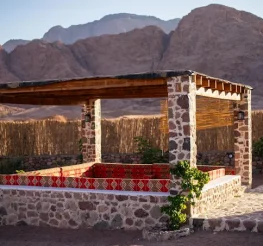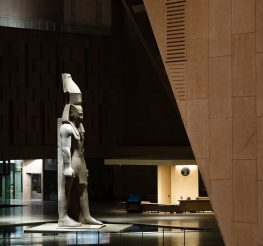
Cairo 360
Images via youm7
It’s been less than a week since we posted about the fifth dynasty tomb that was recently discovered near Saqqara. Well, brace yourselves, because news bulletins are probably going to spread across the TV screens to talk about Egypt’s newest finding. Earlier today, Luxor News posted an update about Italian archaeologists that unearthed a Graeco-Roman rock-cut tomb in Aswan.
The journey begins with an Egyptian-Italian archaeological mission that is working in the Aga Khan Mausoleum area in Aswan, when it discovered a rock-cut tomb. Mostafa Waziri, secretary general of Egypt’s Supreme Council of Antiquities (SCA), stated, “The tomb dates back to the Roman-Greek era for a person called Tjt.”
Little did they know the other valuable artefacts and treasures that were in store for them. Waziri continues to describe the rest of the findings, including a painted wooden coffin. After combining the fragments of the coffin and deciphering the hieroglyphics, the team interpreted the ancient text. It displayed the name of the tomb’s owner and an incantation to the gods and goddesses of the First Cataract, including Hapi, the Nile God. The First Cataract is one of the 6 Cataracts of the Nile, which are described as shallow lengths, or white water rapids, of the Nile River between Aswan and Khartoum.
Dr Patrizia Piacentini, head of the mission, listed other incredible finds, such as vases, amphorae, 30 mummies, fragments of gold-painted funerary masks, and a well-preserved statuette of the famous Ba-bird. Piacentini also emphasised that 300 tombs have been uncovered so far, dating from between the 6th Century BC to the 4th Century AD, in the Aswan West Bank. These add to the 25 existing tombs that had already been excavated by Egyptian archaeologists from 2015 to 2018.





In terms of layout, Dr Ayman Ashmawy, Head of Ancient Egyptian Artifacts at the Egyptian Ministry of Antiquities, said that the tomb consists of a staircase, partly flanked by sculpted blocks, leading to the funerary chambers. Also, the entrance was closed by a stone wall found in the original place that had been erected over the staircase.
We can’t wait to see what they will find next!
recommended
 Arts & Culture
Arts & Culture
How Egypt Is Preparing for the Opening of the Grand Egyptian Museum
GEM GEM Opening +2 Arts & Culture
Arts & Culture



